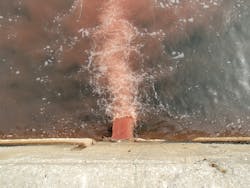EPA settles case with Washington seafood processor over discharge violations
The U.S. Environmental Protection Agency recently settled with South Bend Products over federal Clean Water Act violations at the company’s South Bend, Washington, seafood processing facility.
South Bend Products, a seafood preparation and processing facility, specializes in salmon and crab processing, and also periodically processes razor clams, black cod, rockfish and halibut.
EPA inspected the South Bend facility in 2017. After reviewing facility records, EPA identified violations of the South Bend facility’s wastewater discharge permit, including:
- Exceeded discharge limits
- Insufficient monitoring frequency
- Incorrect sampling, and
- Incomplete or inadequate reporting
As part of the settlement, the company agreed to pay a penalty of $101,630. In addition to paying the penalty, the company has implemented new processes and technologies to address compliance challenges at its South Bend plant.
By improving its effluent treatment South Bend Products has taken steps to reduce the pollutant Total Residual Chlorine in its discharge. The company also established new sampling procedures to adequately monitor for other pollutants such as Total Suspended Solids, Biological Oxygen Demand, and Oil and Grease. Collectively, these measures serve to improve South Bend Products’ discharge to the waters of Willapa River and Bay.
This settlement furthers EPA’s national compliance initiative to reduce significant noncompliance and improve surface water quality by assuring dischargers comply with National Pollutant Discharge Elimination System (NPDES) permit requirements. For more information on this initiative, please visit: https://www.epa.gov/enforcement/national-compliance-initiative-reducing-significant-non-compliance-national-pollutant.
